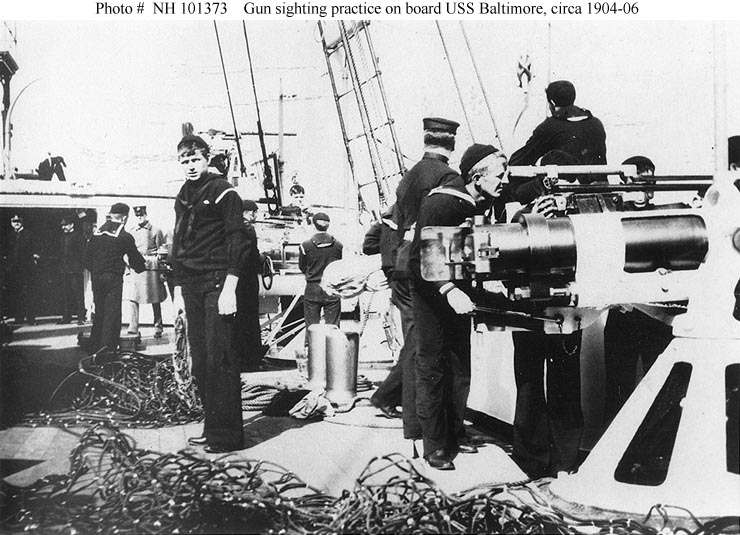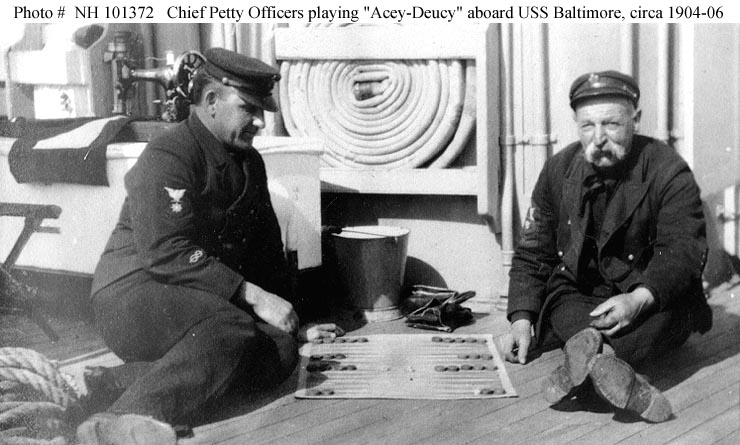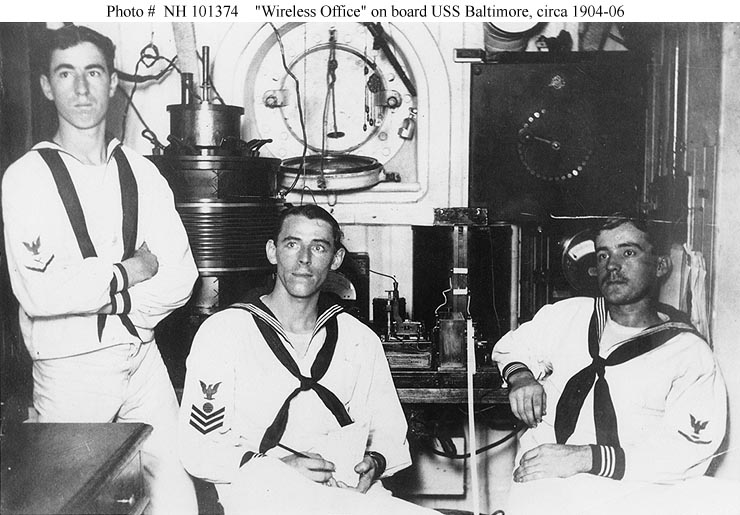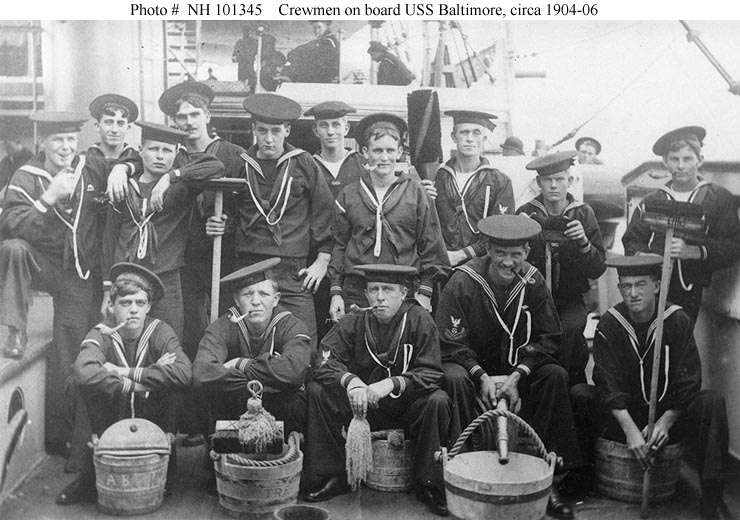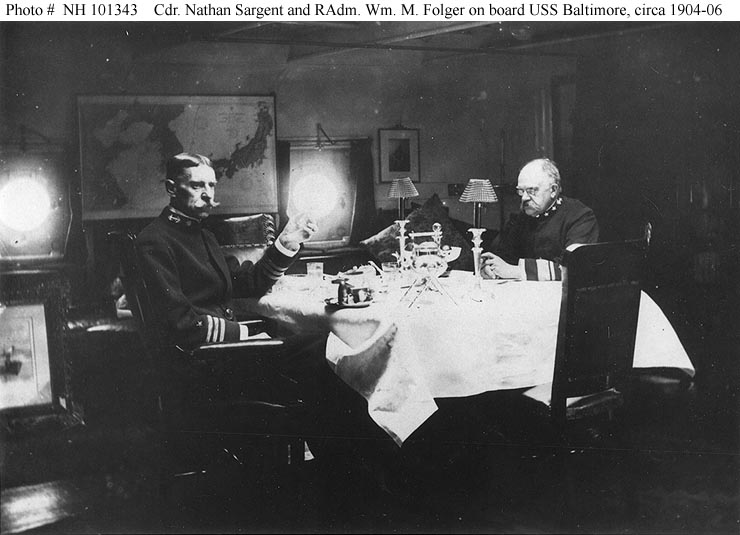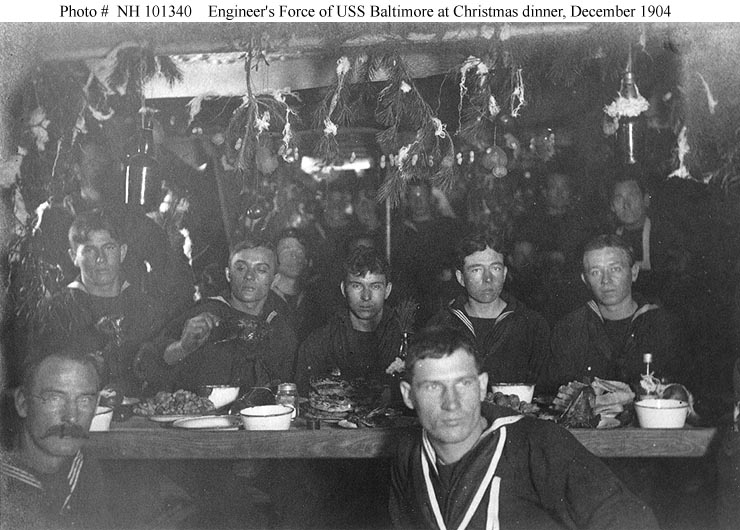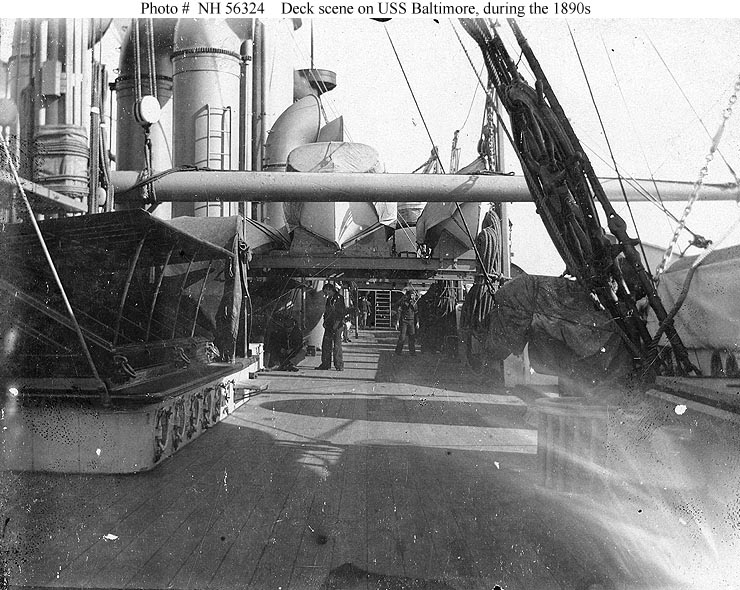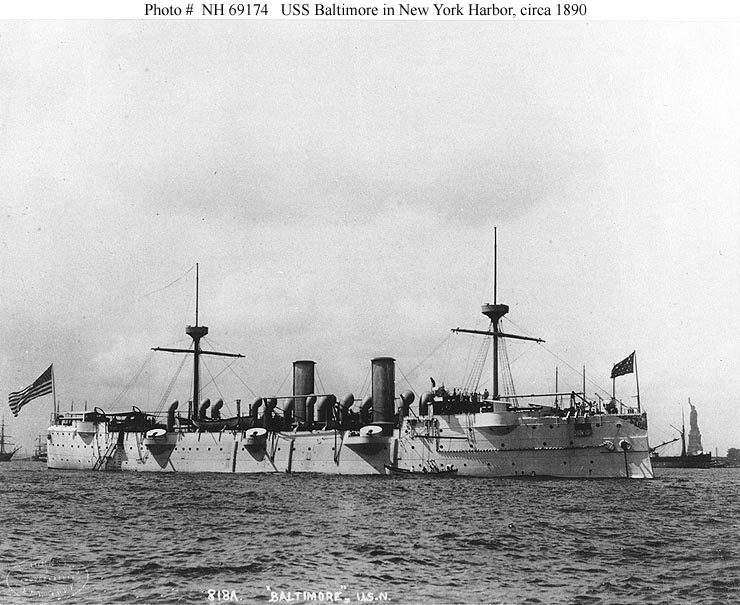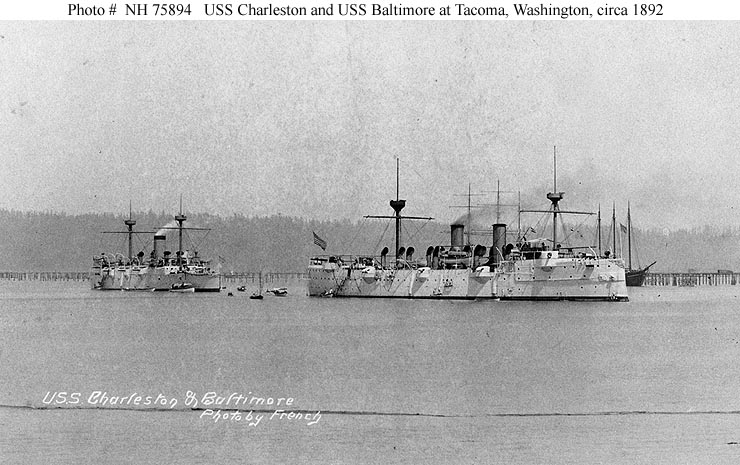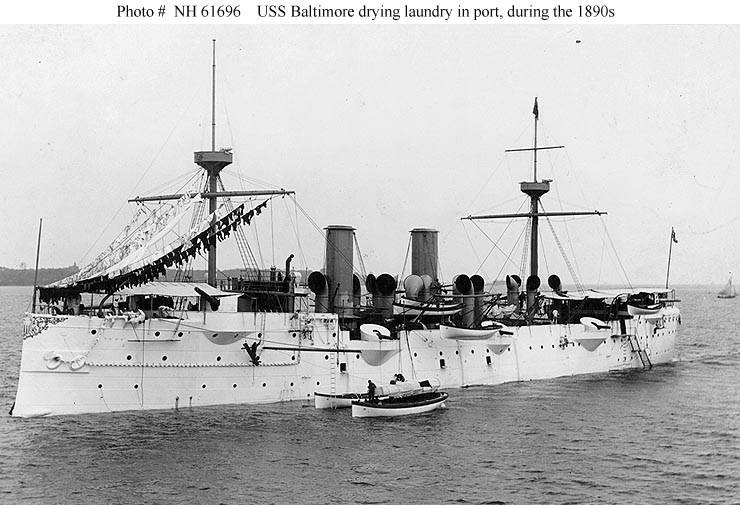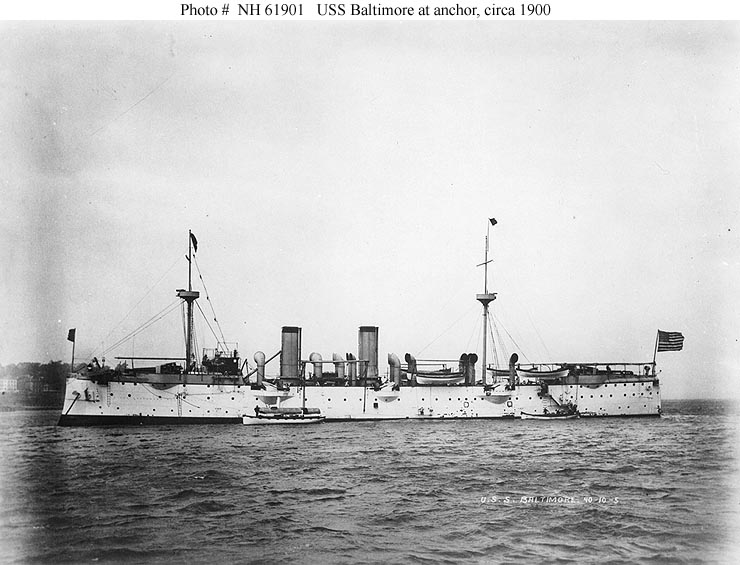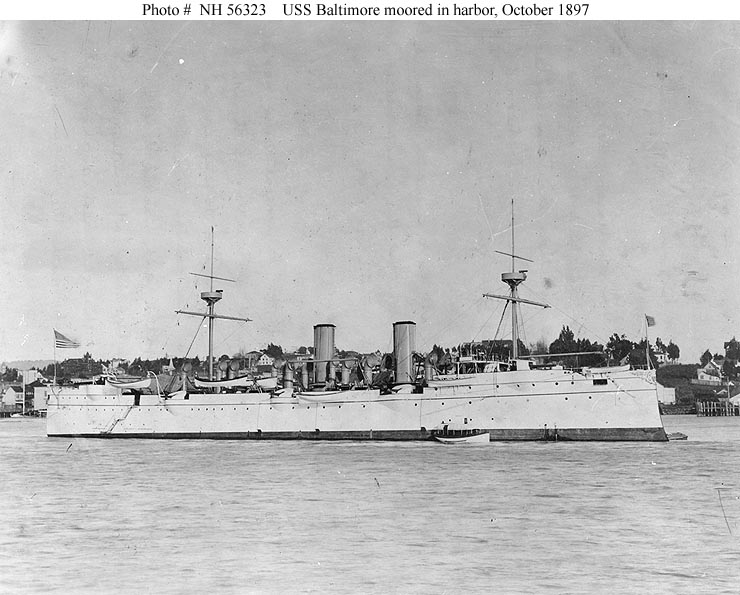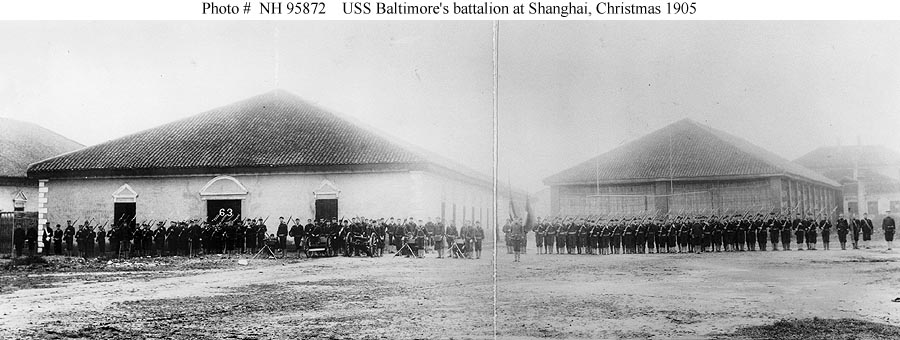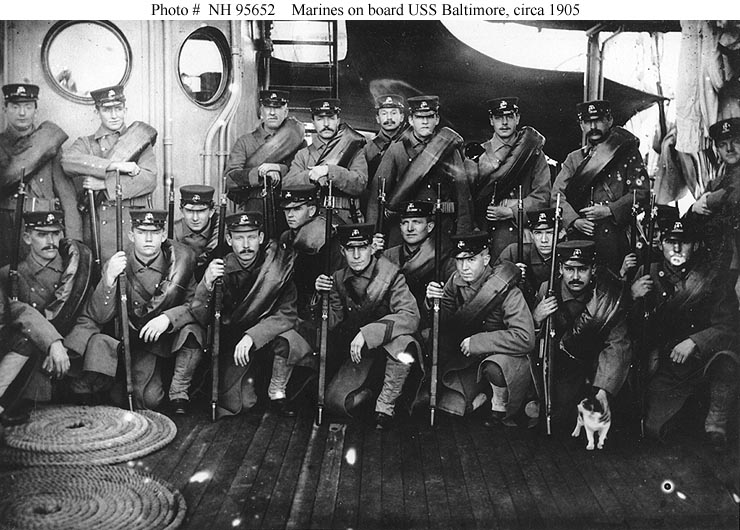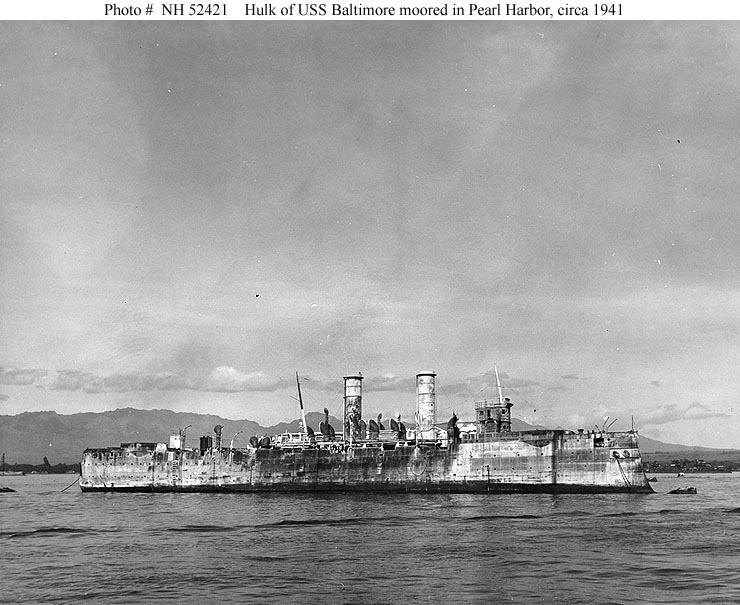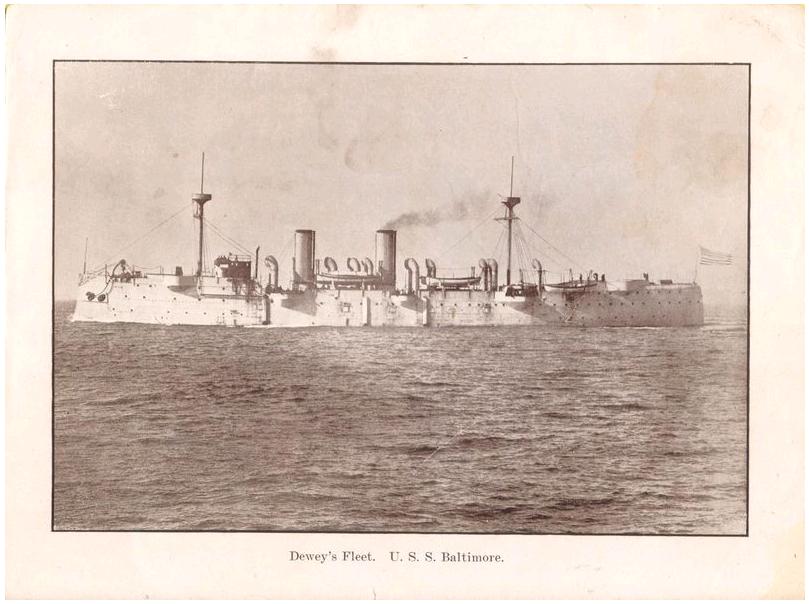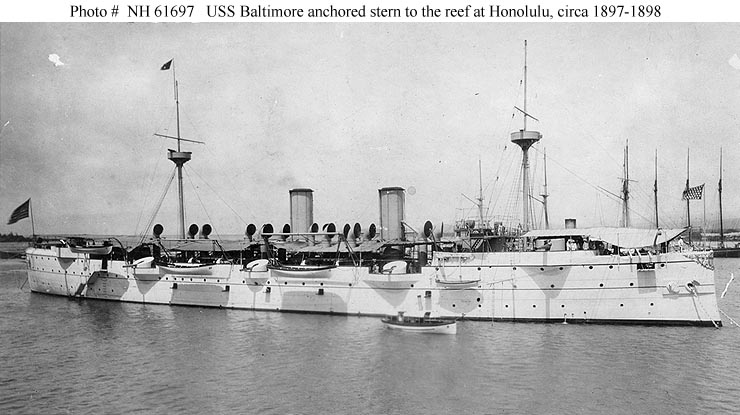 Photo #: NH 61697 USS Baltimore (Cruiser # 3) Anchored with her stern to the reef, at Honolulu, Hawaii. circa 1897-1898. Courtesy of Captain T.T. Craven, USN, 1927. U.S. Naval Historical Center Photograph. 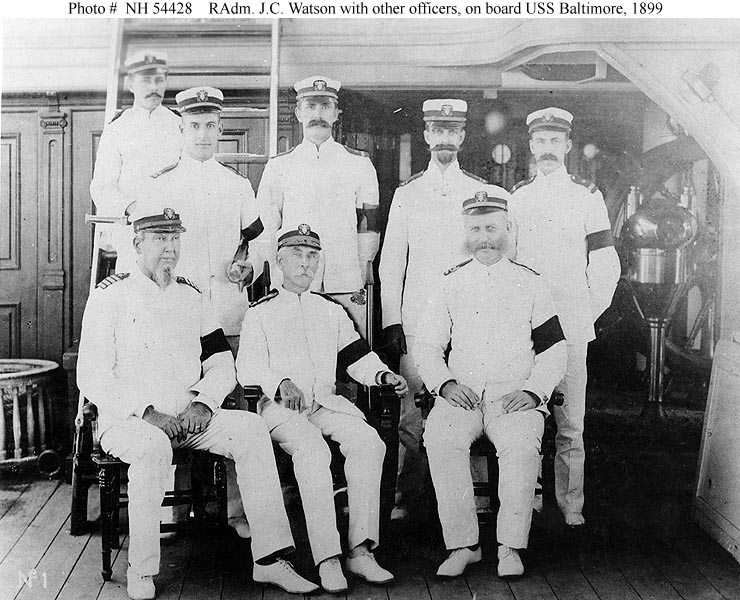 Photo #: NH 54428 Rear Admiral John Crittenden Watson, USN, Commanding the Asiatic Station With members of his staff and other officers on board his flagship, USS Baltimore (Cruiser # 3) in Asiatic waters, 1899. Those present include (left to right, seated): Captain James M. Forsyth, ship's Commanding Officer; Rear Admiral Watson; Lieutenant Commander Chauncey Thomas, Jr. (left to right, standing): Naval Cadet Walter B. Tardy; Lieutenant Frank Marble, Flag Lieutenant; Ensign Albert W. Marshall; Lieutenant (Junior Grade) Walter S. Crosley, Flag Secretary; Ensign Edward H. Watson, Aide. Note black mourning arm bands. U.S. Naval Historical Center Photograph. 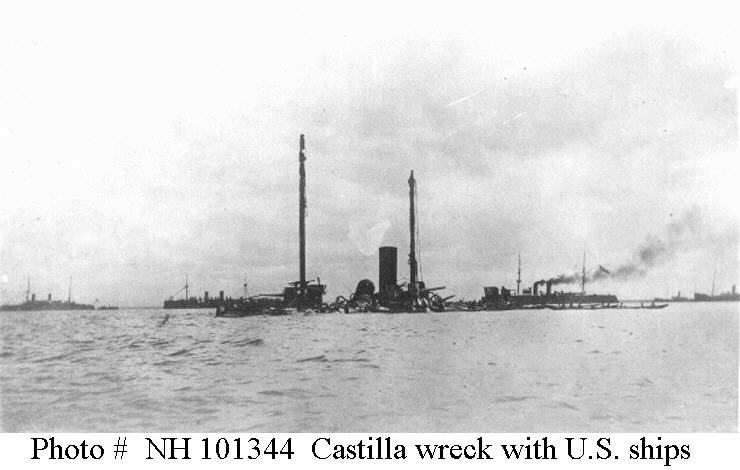 Photo #: NH 101344 Battle of Manila Bay, 1 May 1898 Wreck of the Spanish cruiser Castilla off Cavite, shortly after the battle. In the background are (left-to-right): USS Olympia, USS Baltimore, USS Raleigh and two merchant ships. USS Baltimore album, page 27. U.S. Naval Historical Center Photograph. |
USS Baltimore to escort General Miller to Iloilo On the evening of General Miller's departure the following was also furnished him: Headquarters Department Pacific And Eighth Army Corps, Manila, P. I., December Jri, IS9S. Brig. Gen. M. P. Miller, U. S. V., Commanding First Separate Brigade, Eighth Army Carps. Sir: I am directed by the major general commanding to furnish you with the following Instructions: In case the Spanish forces have evacuated Hollo, you will, on approaching that city. keep your transports Arizona and Pennsylvania well to the rear and beyond the view of the Inhabitants of Iloilo, and you will take Into the Hollo waters your naval escorts, the Baltimore and Oallao, and the transport vessel Union, on which are the native Spanish troops, with your vessel, the Newport. You will make known to the insurgent authorities the object of bringing the large force with you, which is, viz: To take possession of other ports In the Islands, if conditions and circumstances are favorable, but that it may be necessary to keep troops at Iloilo until definite instructions concerning other ports of the islands are received from Washington. Very respectfully, Thomas H. Barry, Assistant Adjutant General. The Offical Records of the Oregon Volunteers in the Spanish War and Philippine Insurrection, 2nd Edition, 1903 USS Baltimore escorts General Miller's expedition to Panay Island February 1899 The expedition, under Gen. Miller, left Manila, December 26th, convoyed by the cruiser Baltimore. On arrival at Iloilo it was found that the Spanish garrison had withdrawn to Zamboango, and that the city was in possession of the insurgents. The expedition remained on the transports until February 11, 1899, pending instructions to meet the changed conditions. The 51st lowa returned to Manila, and its place was taken by the 1st Tennessee, which arrived on February 10th. The Baltimore was replaced by the Boston and Petrel. -Campaigning in the Philippines, Illustrated. published 1899 in San Francisco, California USA USS Baltimore, 1890-1942 (Cruiser # 3, later CM-1) USS Baltimore, a 4413-ton protected cruiser built at Philadelphia, Pennsylvania, was commissioned in January 1890. After serving as flagship of the North Atlantic Squadron, in August 1890 she carried the body of the noted engineer John Ericsson to his native Sweden for burial. Baltimore subsequently cruised in European and Mediterranean waters and in April 1891 joined the South Pacific Station. For the next year and a half she operated off the west coasts of South and North America. Service in the Western Atlantic followed in late 1892 and the first part of 1893. Baltimore then steamed eastward, transiting the Suez Canal to serve from December 1893 to December 1895 as Asiatic Station flagship. She was laid up at Mare Island, California, in mid-February 1896 but recommissioned in October 1897 for several months's duty in the Hawaiian Islands. In April 1898 Baltimore arrived at Hong Kong to begin an eventful second deployment in Asiatic waters. On 1 May, she took part in the Battle of Manila Bay , which destroyed Spanish naval power in the Philippines. She was present in Manila Bay the rest of the Spanish-American War and participated in the Philippines operations that followed. The cruiser returned to the U.S. in mid-1900, again via Suez, and was out of commission at New York from then until May 1903. With her appearance altered by the elimination of her "military" fighting mast tops and other modifications, Baltimore operated along the U.S. East Coast and in the Caribbean for the rest of 1903 and served with the European Squadron between May and August 1904. Later in that year she began a third Far Eastern tour, which lasted until 1907. Following nearly four years in reserve at New York, Baltimore was the receiving ship at the Charleston Navy Yard, South Carolina, during 1911 and 1912. In 1913-1915 Baltimore was converted to a minelayer, recommissioning for Atlantic Fleet mine warfare operations and training service in March 1915. In March 1918 she went to British waters to take an active role in the fight against the German U-boat threat. From then until late September 1918 Baltimore helped lay extensive anti-submarine minefields between Scotland and Ireland, and in the North Sea. With these tasks completed, she steamed back to the U.S. a month before the World War I fighting ended. Baltimore became part of the Pacific Fleet in September 1919. In July 1920, as the Navy implemented its system of ship hull numbers, she was designated CM-1. The old minelayer went to Pearl Harbor early in 1921 and decommissioned there in September 1922. For nearly two decades, Baltimore was inactive at that base, serving for part of the time as a storage hulk. She was present, though in derelict condition, during the devastating Japanese air raid that opened the Pacific War on 7 December 1941. Sold in February 1942, the partially-scrapped ship was finally scuttled at sea on 22 September 1944. |
